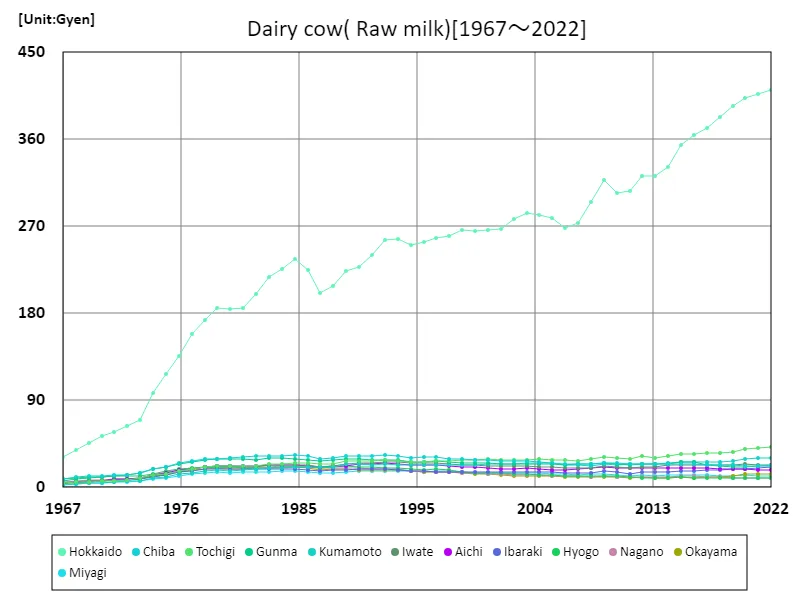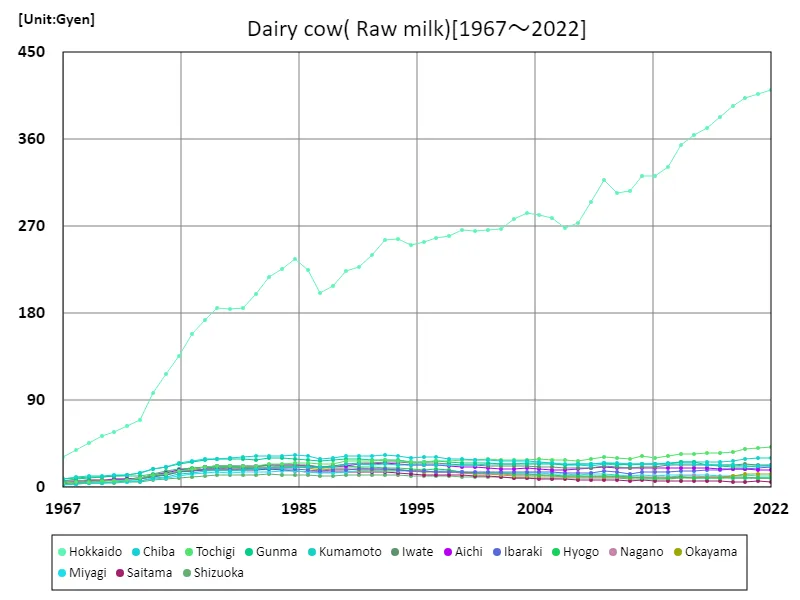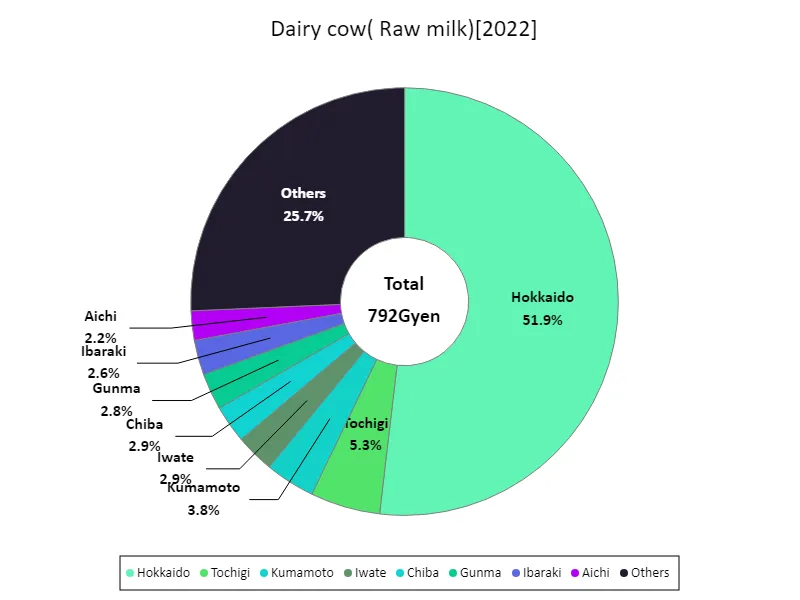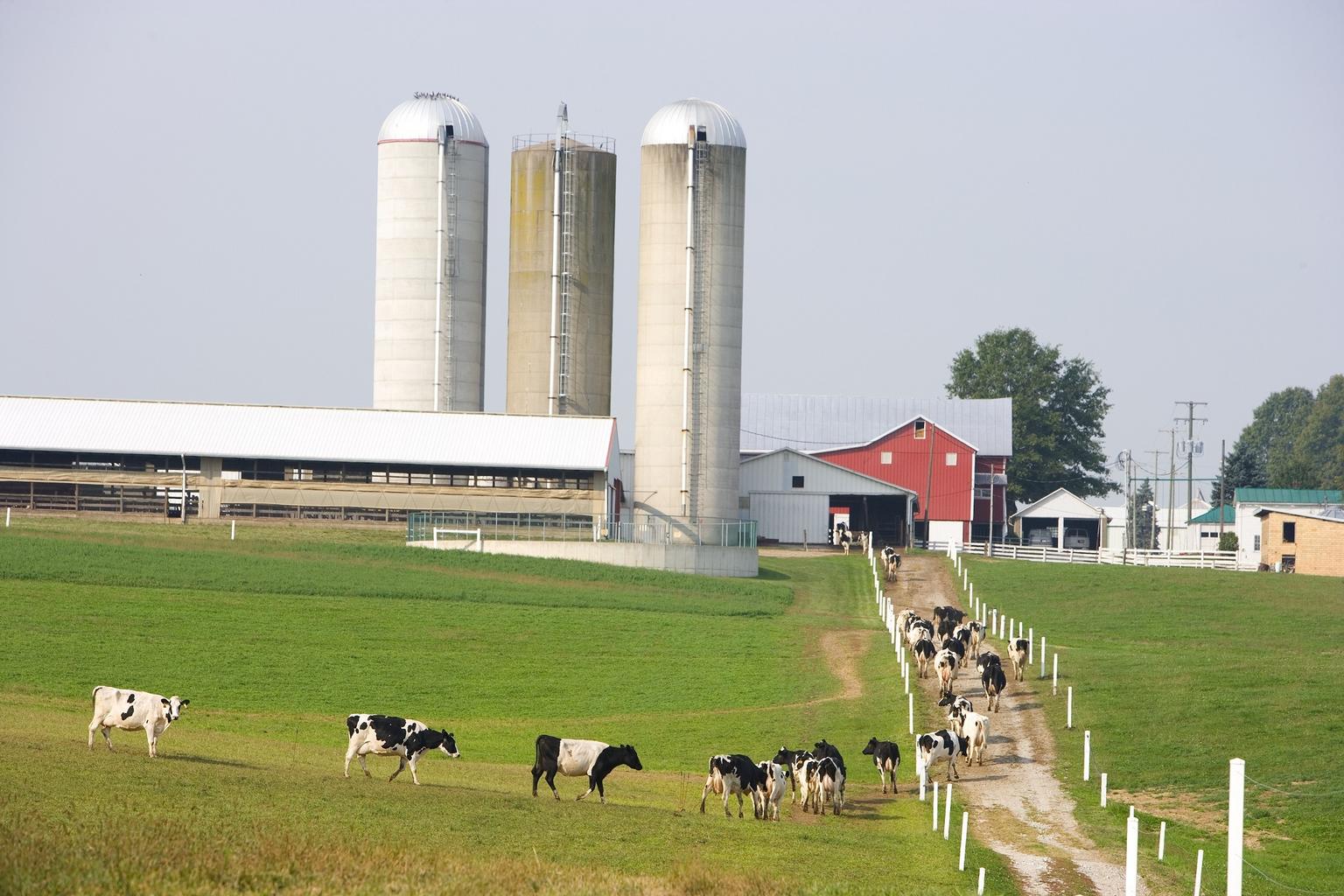Abstract
Among livestock farming in Japanese agriculture, dairy cows (raw milk) are an important source of income. According to data for 2022, Hokkaido recorded the highest income of 411 billion yen. These figures show that Hokkaido is the center of Japan’s dairy industry. Hokkaido’s vast pastures and favorable climatic conditions support the production of high-quality dairy products. In addition, the dairy industry is deeply rooted in Japan’s food culture, ensuring stable demand. However, in recent years, there have been challenges such as a declining population and a shortage of agricultural labor. To address this, technological innovation and efficiency improvements are required. Furthermore, from the perspective of environmental protection and animal welfare, it is important to establish a sustainable livestock industry.
Production income from dairy cows (raw milk)
Income from dairy cows (raw milk) in Japanese agriculture has fluctuated over a long period of time. Looking at data from 1967 to 2022, we can see that Hokkaido achieved revenue of 411 billion yen in 2022. However, this is still less than 100% of previous peak levels. This suggests that profitability in the dairy industry is highly volatile and not stable over the long term. Fluctuations in demand, market competition, as well as changes in climatic conditions and agricultural policies, are thought to have affected the income of dairy cows. Going forward, it will be important for the development of the dairy industry to focus on stabilizing demand, improving production efficiency, and ensuring the sustainability of agriculture.


The maximum is the latest one, 411Gyen of Hokkaido
Production income from dairy cows (raw milk) (prefectures)
Income from dairy cows (raw milk) in Japanese agriculture has fluctuated over a long period of time. Looking at data from 1967 to 2022, we can see that Hokkaido achieved revenue of 411 billion yen in 2022. However, this is still less than 100% of previous peak levels. This suggests that profitability in the dairy industry is highly volatile and not stable over the long term. Fluctuations in demand, market competition, as well as changes in climatic conditions and agricultural policies, are thought to have affected the income of dairy cows. Going forward, it will be important for the development of the dairy industry to focus on stabilizing demand, improving production efficiency, and ensuring the sustainability of agriculture.


The maximum is the latest one, 411Gyen of Hokkaido
Production income from dairy cows (raw milk) (latest year, prefecture)
In 2022, Hokkaido recorded the highest income from dairy cows (raw milk) in Japanese agriculture, at 411 billion yen. The average income is 16.9 billion yen, and the total is 792 billion yen. This data clearly shows that Hokkaido is the center of the dairy industry. Additionally, the dairy industry is an important source of income nationwide, with overall total income shown to be high. The dairy industry is deeply rooted in Japan’s food culture and demand is stable, but regional disparities and imbalances in production volumes also pose challenges. In the future, it will be necessary to establish production systems that are suited to local characteristics and demand, and to promote sustainable agricultural models.


The maximum is 411Gyen of Hokkaido, the average is 16.9Gyen, and the total is 792Gyen



Comments